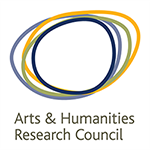Key in a search term below to search our website.
Key in a search term below to search our website.
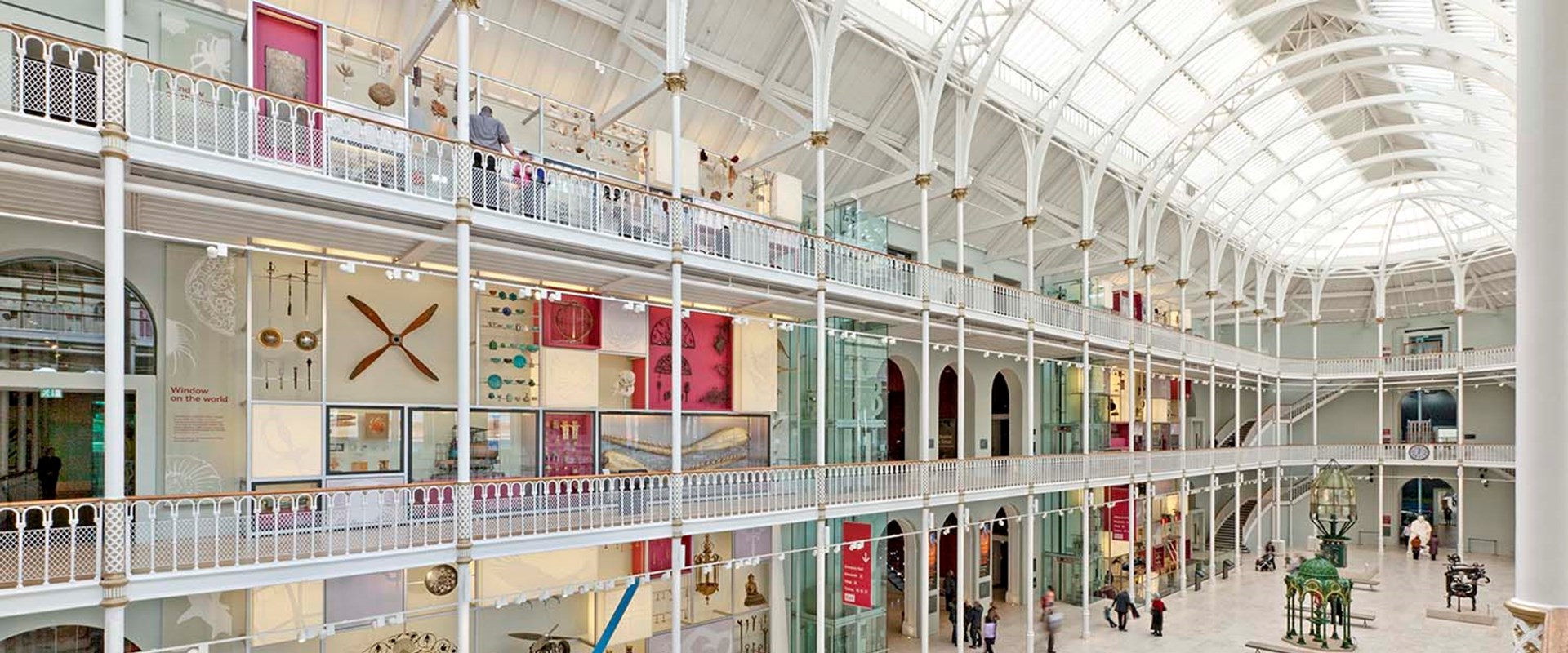
Last updated: 7 March 2024
The £450,000, 18-month pilot project, entitled Exchange: Community-Led Collections Research, sees funding distributed to galleries, libraries, archives and museums to work with South Asian, African and Caribbean diaspora organisations to answer research questions identified by these community groups.
National Museums Scotland and the National Maritime Museum, London are working as a hub; gathering evidence for best practice guidelines, providing expert guidance and holding a central fund which is distributed to partner organisations around the UK.
Outputs will include new research into the historic and contemporary meanings of objects, which will inspire new, creative projects defined by community groups and centered around partner organisations’ collections. These will challenge and expand on established representations of diaspora experiences.
Project title
Exchange: Community-Led Collections Research
Project active
2021 - 2022
Research theme
Scotland's Material Heritage
Dr John Giblin - Principal Investigator, Keeper for the Department of Global Arts, Cultures and Design
Dr Yahya Barry - Community Collections Research Hub Manager at National Museums Scotland and a senior visiting researcher at the University of Copenhagen’s Centre of African Studies
Iona Diver - Hub Administrator and Departmental Administrator for the Department of Global Arts, Cultures and Design
Jilly Burns - Head of National & International Partnerships
Janie Hopkins - Head of Learning & Engagement
Dr Robert Blyth - Co-investigator, Senior Curator of World History at National Maritime Museum
Sally Archer - Research and Heritage Partnerships Manager
Sarah Lockwood - Head of Learning and Interpretation
Dr Aaron Jaffer - Curator, World Cultures
Roz Croker - Senior Manager: Partnerships and Public Engagement
Charlotte Paddock - Adults and Communities Participation Manager
Confirmed partner organisations in Scotland include:
Confirmed partner organisations in England include:
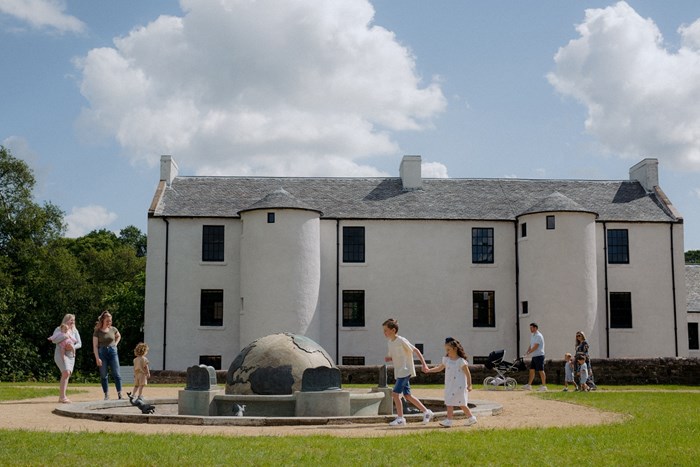
David Livingstone Birthplace. Image: Walnut Wasp
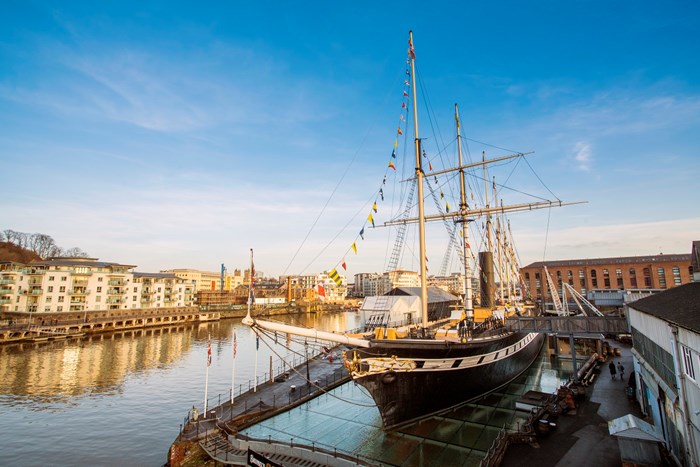
Brunel SS Great Britain. Image: Adam Gasson
“We want to support greater equality, diversity and inclusion within the galleries, libraries, archives and museums sector in the UK. To do this we need to consider who is visiting our institutions and what they find there when they do. We need to invest more work in how histories of empire, migration and life in Britain are told from the perspective of diaspora communities. This generous grant from the AHRC will allow organisations to work with UK communities who have historically been marginalised in museum and gallery displays to reveal and share a wider range of stories and perspectives.- Dr John Giblin, Keeper of Global Arts, Cultures and Design at National Museums Scotland
Community partners
David Livingstone Birthplace (DLB) created their own community group by recruiting six participants from the African, South Asian and Caribbean diaspora communities. The call for participants was shared through the West of Scotland Regional Equality Council, Jambo! Radio and DLB partner’s networks.
Project overview
The Exchange group had a strong interest in forgotten stories, challenging traditional narratives and examining the legacies of these narratives in a contemporary context, and the perception of African culture today. They were especially interested in how the DLB collection spoke to the African cultures, communities and individuals Livingstone encountered and revealing their stories through object research and creative practice.
Research themes
Two objects became focal points for research: a fibrous grain urn belonging to either Abdullah Susi or James Chuma, two African men who worked on Livingstone’s expeditions, and an Mbila (xylophone) made by the Chopi people.
From these interests, the participants posed two research questions:
Tingatinga Party
DLBM Exchange Group organised and hosted a free Tingatinga style drop-in event that featured live music from ‘The Gig Group’, food and storytelling with performances from artist Gameli Tordzro, a Tingatina inspired art installation by artist Josie Ko, a specially commissioned film by Mara Menzies and the launch of a new zine exploring untold stories in response to David Livingstone Birthplace Museum (DLBM) collections.
Community partners
Edinburgh Caribbean Association
Project overview
Looking at the collections in the Museum of Childhood, the group focused on comparing experiences of childhood in Scotland and the Caribbean exploring lack of representation, policisation of childhood and possible racism in the collections.
"I don't see my childhood here"
Discussing their own experiences of childhood led the group to explore traditional sayings and their meanings, music, food, and folklore. The project provided a unique opportunity for intergenerational working and collaboration with individuals and communities in the Caribbean.
Creative outcomes
Community partners
BAG (Bangladesh Association Glasgow) and young people from the OSCH (Our Shared Cultural Heritage) programme.
Project overview
The project researched and interpreted The plaque is a rare piece of evidence for the existence of Bengali speaking sailors (Lascars) in Glasgow in the 1800s.
The groups’ research was centered on questions relating to a plaque inscribed with 'Lascars Only' in English and Bengali originally used above the entrance to the toilet facilities for the seamen at Queen’s Dock in Glasgow Museums collection including:
Creative outcomes and engagement
As the groups’ research continued, they found their questions evolved to concentrate less on the actual plaque and more on the experiences of the seamen themselves through art and drama, as well as a deeper investigation of the politics, working lives and the commercial structure of the companies that employed South Asian mariners.
Community partners
Bangladeshi Youth led by artist Rahemur Rahman, and Kasi Ruksana Begum from London Borough of Tower Hamlets.
Project overview
The project merges research interests in British Bangladeshi oral history with a focus on the Bangladeshi bedroom as a space that is often overlooked but full of stories of identity and heritage, especially for women. The project focused on creating a collection of oral history testimonies, photographs, and films that document people’s homes and how they feel about them. Through their experience interviewing and recording stories of identity, the group developed several research questions:
Creative outcomes
The project worked with a renowned local artist, Rahemur Rahman, to deliver a series of workshops with young people of Bangladeshi heritage to collect their and their families' stories of home. The participants drew upon the content of the interviews to create textiles and objects to form part of a new pop-up bedroom display, My Home, My Bari at the museum. The artwork will allow visitors to step back in time with a multi-sensory art installation using smells, sights, and textures to bring history to life through a representation of the bedrooms of the British-Bangladeshi community around East London, and allowed their stories to be recognised, honoured, and heard.
Community partners
Chat Over Chai, an inclusive group which celebrates the South Asian community in Portsmouth, and The Royal Navy's Equality & Diversity Team which links Royal Navy personnel from a range of backgrounds, including people from African, Caribbean and South Asian communities.
Project overview
The project ‘Tidal Teatime’ used the associations of drinking tea as a backdrop for difficult conversations about Empire and provide a way of soothing feelings while bringing people together. The group used this as a platform to draw out different perspectives and explore new narratives linked to the NMRN collections.
The group’s research focused on both adding information to the collections and exploring their own thoughts and feelings in response to exploring themes of empire and migration.
Creative outcomes
The community participants chose three items to explore and answer their research questions:
Through their research and collaboration, the group addressed the history of these objects, redesigned and reinterpreted them, and uncovered some of the forgotten stories associated with them. Three short films were produced to showcase their findings and their responses to them:
Community partners
Tyneside Research Collective: a group of self-selecting people from the African and Caribbean community. Members are representatives of: North East of England African Community Association (NEEACA), The Angelou Centre, Teakisi, Newcastle University Staff Black, Asian and Minority Ethnic network and Newcastle upon Tyne Hospitals NHS Foundation Trust Black, Asian and Minority Ethnic staff network.
Project overview
The project aimed to explore how the histories of diaspora communities are interlinked, in order to enhance a sense of belonging and to promote a greater understanding of the pluralism of Tyneside. The group developed research questions they hoped to answer throughout the project:
Creative outcomes
"It's been wonderful to be part of and we all think it's been one of the most important projects we have undertaken in years." - Kylea Little, Keeper of History, Discovery Museum.
Community partners
The Bridging Gaps community group based at Hannah More School, where 95% of pupils and parents are of black or minority ethnic origin and is based in a ward with the highest proportion of Black, Asian and Minority Ethnic people in Bristol.
Project overview
The project explored critical questions that relate to the SS Great Britain and its connection to Bristol today:
The community researchers identified a misunderstanding about the historical role of SS Great Britain and its links to slavery, which they also wanted to address through their research. Their research questions focused on passenger stories, their life on board and connections to writing, art and music.
Creative outcomes
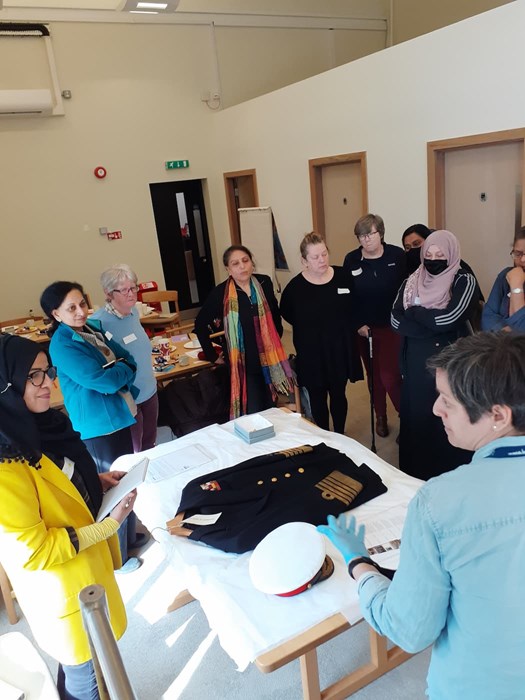
Workshop held at the National Museum of the Royal Navy
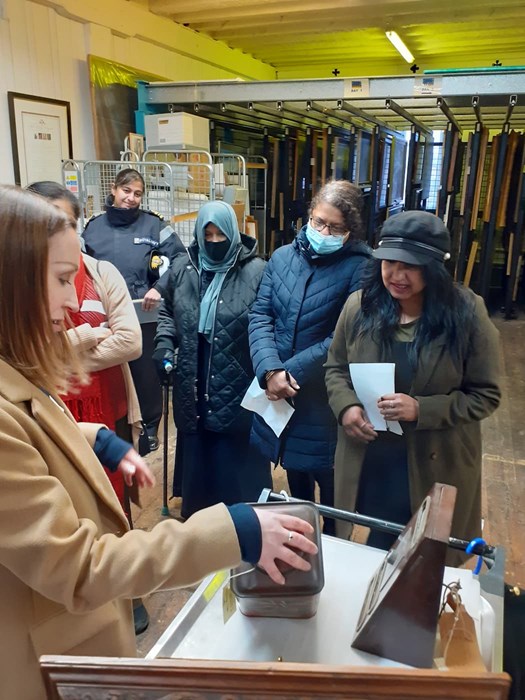
Workshop held at the National Museum of the Royal Navy
